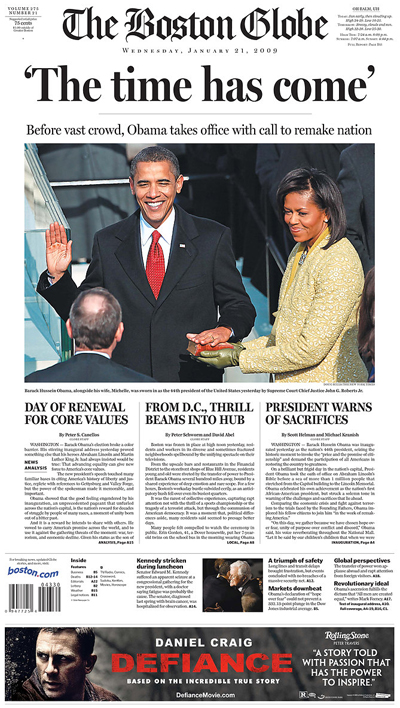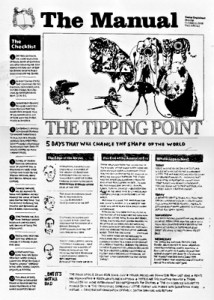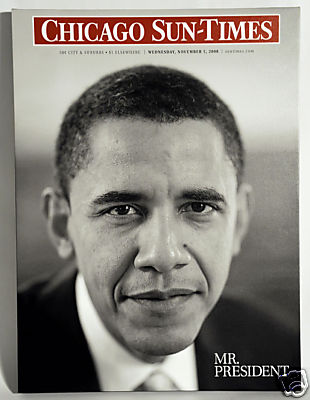Several outlets are reporting that Hearst has contacted a handful of journalists at the Seattle Post-Intelligencer to make “provisional offers” of jobs at a much smaller, online-only version of the newspaper. It’s not known what the provisions are, but it looks like Hearst still hasn’t made up its mind whether to go through with the project. The P-I is hanging by a thread. Tomorrow will be the 60th day since Hearst’s January 9 announcement that the paper would either shutter its print operations or close entirely if a buyer isn’t found.
If the P-I continues online, it looks to be as a dramatically leaner operation. Metro reporter Hector Castro, who says he rejected the Hearst offer, told the P-I‘s Dan Richman that the offer “increased his health insurance cost, cut his salary by an unspecified amount, offered to match his 401(k) contributions, required him to forgo his P-I severance pay, reduced his vacation accrual to zero and required him to give up overtime.” Welcome to the Internet, Hector.
Because Hearst has apparently clamped a gag order on employees it has approached about the new venture, Richman resorted to asking everyone in the office if they had been contacted by the company. He found about 20 people who responded “no comment.” This roughly matches anonymous estimates that the online P-I would have a staff of about 20. None of the copy editors, editorial writers, designers or sports or features writers declined to comment, indicating that those functions are considered extraneous by Hearst, at least for the moment. We’ll no doubt hear something more substantive this week as the deadline arrives.
The P-I is already acting like it’s over as evidenced by this memorial section on its website.
Boston Globe on Horns of Layoff Dilemma
The Boston Globe, which actually gave some employees lifetime job guarantees back in the early 90s, is struggling to figure out how to implement a layoff of 50 newsroom employees without letting go of some of its best people. The problem is that the Newspaper Guild contract specifies that layoffs need to be conducted on the basis of seniority. This visionary concept now leaves the Globe on the horns of a dilemma: some of its most productive and promising young reporters may have to be laid off so that overpaid veterans in cushy jobs can be kept on board. The Boston Phoenix names names. There’s a buyout offer on the table but it’s apparently getting only lukewarm interest because no one wants to be unemployed in this crummy economy. So the Globe will probably have to make involuntary cuts. Management is allowed to circumvent the seniority rule under special circumstances, but it must justify each and every exception and could be subject to grievances in each case.
What Went Wrong at Journal Register
The Albany Times Union has few kind words for the basket case that is Journal Register Co. Formed from the wreckage of Ingersoll Publications in 1990, JRC remained a relatively small Michigan-based chain under five years ago, when it went on a buying spree that created a 300-title empire. However, it took on way too much debt in the process, particularly in light of its concentration in the recession-prone state of Michigan. JRC has crashed and burned in spectacular fashion over the last couple of years. Its model is pretty roundly hated by the journalists who have worked there: cut costs to the bone and maximize profits. Yet did you know that even as it languishes in bankruptcy, Journal Register still makes a profit? It’s just not enough of a profit to service its huge debt load.
Layoff Log
- Editor & Publisher wraps together two layoff notices in one: Guild members at the Fresno Bee will vote tomorrow on a new management proposal to cut wages by up to 6%. If the union doesn’t agree, management is threatening to reduce newsroom staff by up to 29%. And the Fort Worth Star-Telegram is reducing its workforce by 12% and cutting wages in line with parent McClatchy Corp.’s cost-reduction targets. The Associated Press has more on the Star-Telegram cutbacks. The company is also offering a buyout to most of its 1,000 employees. It already cut 18% of it staff last year.
- We’ve frequently chided newspaper publishers for championing the public’s right to know while burying their own bad news in layers of vagueness and doublespeak. But we certainly can’t say that about the Tri-City Herald of Washington state. Its recent announcement of a wage reduction and other cost cuts offers bountiful detail about everything from ad:edit ratios to the size of its biggest advertiser contracts. There’s even a reference to mileage reimbursement expenses.
- Blogger Gary Scott reports on layoffs at the Riverside (Calif.) Press-Enterprise. He’s got names, too: 20 of them.
- The Winnipeg Free Press laid off five people, eight if you count early retirements.
- The Columbus Dispatch reportedly used e-mail to notify 45 employees that they were being laid off.
Miscellany
Massachusetts Governor Deval Patrick has proposed that state public transportation projects should be advertised on the Internet instead of newspapers. The proposal is buried in a big transportation bill now before the legislature. The governor’s office says it’s just trying to save money. Government contract notices have long been an annuity revenue stream for newspapers, which benefit from laws in many states that require them to be published in local dailies.
 The image at left accompanies a short story about layoffs at the Buffalo News that appears on the website of a local television station in Rochester, N.Y. The uncaptioned image has no “alt” text and is named “jobcuts2009-03-02.” We wonder if these are escaping employees of the Buffalo News captured on infrared camera, the ghosts of former journalists or perhaps managers striding decisively toward the future. Your interpretations are appreciated.
The image at left accompanies a short story about layoffs at the Buffalo News that appears on the website of a local television station in Rochester, N.Y. The uncaptioned image has no “alt” text and is named “jobcuts2009-03-02.” We wonder if these are escaping employees of the Buffalo News captured on infrared camera, the ghosts of former journalists or perhaps managers striding decisively toward the future. Your interpretations are appreciated.
Los Angeles Times Columnist David Lazarus says the solution is for big newspapers to band together and deliver services as a package for $10 a month, just like HBO. “I read a half-dozen or so newspapers online every day. Right now I pay nothing for their output. Would I be willing to pay the equivalent of several lattes at Starbucks monthly for the same privilege? Absolutely,” he says. “Like I say: fixable.” At least it’s fixable if your entire audience is people like David Lazarus.
The University of Arkansas Traveler has a short profile of Erica Smith, whose Paper Cuts layoff tracker has become the unofficial statistician for industry cutbacks.
There appears to be a run on journalistic self-indulgence today as newsroom veterans tell their readers about what a great job they’re doing in the apparent self-deception that readers give a hoot: Here and here.
And Finally…
One of our favorite new Internet companies is someecards.com, a distributor of online greeting cards that bear delightfully cynical, snarky and even obscene messages. Someecards is to greetings what Despair is to motivational posters: an irreverent stick in the eye of an industry that suffers from unbearable cuteness. Now someecards has launched a user-generated companion site, yourecards.com, where visitors can work from a collection of templated illustrations to create their own bizarre messages. A sampling:
- “The fact that you thanked Hugh Hefner, and not your family, in your barmitzvah speech was highly inappropriate.”
- “Here’s hoping your new music degree will get you a better Mcjob.”
- “Sorry that restricted number I ignored was your one call from prison.”
Who says user-generated content doesn’t have a future?

 Mark Potts
Mark Potts 






 A team of enterprising publishers in the UK produced a four-page
A team of enterprising publishers in the UK produced a four-page  The Chicago Sun-Times
The Chicago Sun-Times 

 The Onion offered a tutorial in how to write a provocative magazine cover line (right).
The Onion offered a tutorial in how to write a provocative magazine cover line (right). The Simpsons showed its snotty character Nelson insulting a journalist. “Hah hah! Your medium is dying!”
The Simpsons showed its snotty character Nelson insulting a journalist. “Hah hah! Your medium is dying!”

